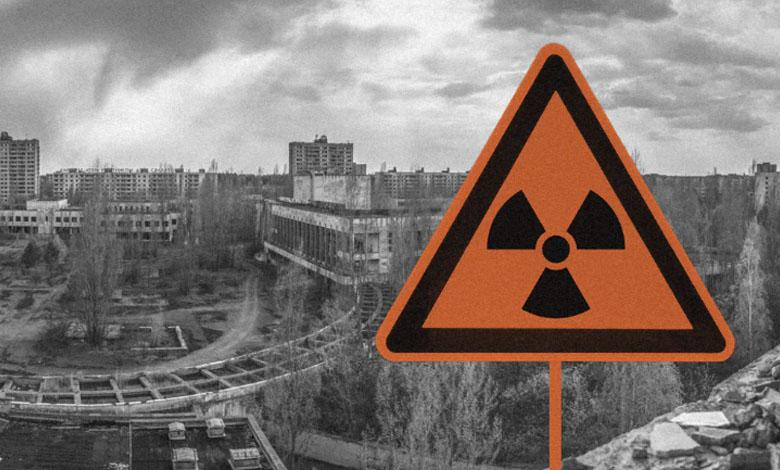Return to the Chernobyl Land: An Agricultural Experiment, Scientific Data, and a Chance for a New Life

IA “FACT” with a reference to The Independent publication already wrote, that part of the agricultural land, which remained unusable for almost 40 years after the accident at the Chornobyl NPP, is now recognized as safe for agricultural use.
After the explosion in 1986, huge areas around the station were closed: more than 4,000 square kilometers were declared an exclusion zone, another 2,000 – a forced evacuation zone. But even with all the bans, these lands were never completely deserted – thousands of people still live there.
Years passed, and the radiation background gradually was decreasing: isotopes decayed, and the top layer of the soil underwent natural erosion. However, since 1991, no one has reviewed the official status of these lands.
Despite this, some farmers did not wait for permits. They returned to their land, which for a long time was considered cursed. And although it has not yet been officially removed from the dangerous list, people are sowing and harvesting again. At your own peril and risk, but with hope.
So, the lands that 39 years ago were said to be poisoned forever are now again in the field of view of agrarians and scientists. And an urgent question that sounds more and more often: is it really possible to grow something on this land and does it make economic sense?
What radionuclides remain in the soil
The main long-lived radionuclides that remained after the disaster, there is cesium-137 and strontium-90. These elements have a half-life of about 30 years and can accrue in plants and animals. However, according to a study conducted by scientists from the University of Portsmouth, the level of these radionuclides in Zhytomyr soils has significantly decreased and does not exceed acceptable standards for agriculture.
The researchers analyzed soil samples and measured the level of gamma radiation in a 100-hectare area. The results showed that the effective radiation dose for agricultural workers is significantly lower than the national safety limit established in Ukraine. It means, that the cultivation of crops such as potatoes, cereals, corn and sunflowers is safe for consumption.
Although the level of radiation in soils has decreased, some crops, in particular legumes, can accumulate radionuclides This can lead to their entry into animals’ bodies through feed. Therefore, it is important to choose crops with a low level of accumulation of radionuclides and to follow the recommendations for conducting agriculture in these regions.
Return to Chernobyl: what the state thinks and whether it will support farmers
Until very recently, the Chernobyl zone was only talked about as a dead land – a place where tourists are taken only for the sake of creepy photos. But a different vision is increasingly emerging: this territory is not only about tragedy, but also about the future. The radiation background in many regions is decreasing, farmers are cautiously returning to the land, and the state is finally announcing ambitious plans.
Last year, the Ministry of Environmental Protection presented strategy for the development of the Chernobyl zone for the next 10 years. It is about transforming the former exclusion zone into a space for science, innovation, green energy and even controlled agriculture.
Strategy called protect the environment and restore life to some areas where it is already safe. Among the priorities are the development of research clusters, support of green economy projects and creation of conditions for legal land use.
For now, the state is cautious: it is impossible to allow everyone to sow the fields around the Chernobyl nuclear power plant. But already now, farmers working in nearby areas, in particular, in part of the territories of Zhytomyr and Kyiv regions, they can apply for financial support.
The government program provides 8,000 hryvnias for each hectare of land if the farmer works in the de-occupied territory, and 4,000 hryvnias for each hectare of controlled land. There are separate grants for the development of gardens, greenhouses, and the development of animal husbandry even in the affected regions.
A key institution that responds for policy in the zone, — State Agency for Management of the Exclusion Zone. It is DAZV that controls where something can be done and where not. They must not only protect, but also modernize: launch educational projects, infrastructure, land clearing, etc.
In addition to DAZV, this topic also involves the Ministry of Agrarian Policy, which is responsible for supporting farmers and agricultural projects, the Ministry of Health of Ukraine, which sets sanitary requirements for product safety, as well as the State Production and Consumer Service, which controls the quality of products in order to prevent “dirty” crops from entering the markets.
That is, if a farmer wants to grow something in the “grey zone” (an area outside the 30-kilometer circle that still has an elevated background), he needs to go through a difficult bureaucratic procedure: from soil testing to approval from the authorities.
“Chernobyl farms”: what the world thinks about growing products on post-radiation land
British scientists, together with Ukrainian specialists, conducted a thorough study of the soil condition on a 100-hectare plot in the so-called “gray-green” zone outside the 30-kilometer radius. The result was surprising: the level of gamma radiation turned out to be safe for humans, and the soil samples were suitable for growing crops.
After the accident at the Fukushima nuclear power plant in 2011, due to fear, bans and restoration, the Japanese have passed your way At first, they were afraid to even touch products from the region. But thanks to strict radiation control, regular inspections and transparency, within a few years, food from Fukushima returned to the market, including for export.
And the charitable organization JNPOC tells the stories of local farmers who, despite reputational difficulties, are rebuilding their farms and fighting for every buyer’s trust.
International Atomic Energy Agency IAEA developed techniques for farmers in post-radiation zones to be able to grow crops safely. These include fertilizing, deep plowing, and soil acidity control. That is, even where the earth still retains traces of its radioactive past, there is a way to make it safe.
And international journals such as “Science of the Total Environment” more than once published data on the successful reduction of radiation risks in soils by agrotechnical methods.
The real potential of Chernobyl land
So, according to research, part of the land turned out to be suitable for growing corn, sunflower, potatoes and cereals. These are crops that absorb a minimum of radionuclides from the soil — unlike, say, legumes or berries.
The world media reported that 20,000 hectares could be brought back into circulation, the yield from the investigated fields corresponded to the average indicators in the region, and under certain conditions, even higher.
But everything is more complicated, after all, after Chernobyl stretches heavy reputation trail. For years, people have heard: “radiation, Chernobyl, mutations.” And now it is not easy to tell them: “here are the potatoes from there.” But the example of Japan after Fukushima shows that trust can be restored. Products from the affected region are being exported there again today. The secret is strict radiation control and transparency.
State laboratories are already functioning in Ukraine and are used portable radiometers for checking products directly on the spot. For example, according to information from the Science and Technology Center in Ukraine, as part of a project funded by the Government of Canada, a radiation detection system was installed at checkpoints in the Chernobyl zone, including the supply of portable radiometers and training of personnel in their use. And if the state undertakes to guarantee safety, the market will recover.
Currently, agricultural giants such as MHP or Kernel have not entered the Chernobyl zone. But small farmers are already trying. So, a year and a half ago, DAZV provided 1,437 hectares of land within the zone for lease for an agricultural experiment. This is a so-called “transition zone”, an area with a lower level of pollution. So far, these are individual cases. But if scientific data confirms the safety of the crop, the business will go.
Tetyana Viktorova





